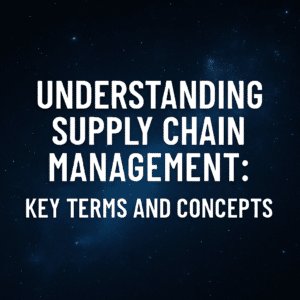The 2020s are forcing organizations across the world into business transformations – whether they want to or not.
Most of the companies we were speaking with just a few months ago were focusing on strategic digital transformations that were meant to leverage top ERP systems to improve business operations. Most of these initiatives were focused on cool new capabilities such as internet of things, robotics, artificial intelligence, and other leapfrog technologies. We were thinking long-term while swinging for the fences.
The new normal of business transformation
Then COVID-19 hit. Instead of focusing on big-picture strategic technologies, many organizations were forced into survival mode. For example, one of our clients is experiencing a 90% year over year drop in sales volumes. His is a US-based company with less than 500 employees, so he qualifies for government aid that allows him to hire our team to select and implement a new ERP system. He is doing this as a way to survive.
Other companies are experiencing dramatic increases in sales volumes. Our client base within essential businesses such as food, medical device, and healthcare are experiencing unpresented surges in demand and the need for supply chain transformations.
Most of our clients are somewhere in between these two extremes. They may not want to change, but they are being forced to in some way. For example, every company in just about any industry or region of the world is trying to tackle HR and human capital issues. This is creating more of a need to evaluation one or more of the leading HCM systems to navigate this opportunity.
This video outlines some of the ways that organizations can and should navigate their business transformations in light of today’s realities:

Companies are being forced to rethink their business processes and operating models to navigate a post-coronavirus world. Below are several steps that companies can and should take to help transform their businesses.
Table of Contents
ToggleAssess your current situation
No matter where you think you are in these unusual times, it is important to assess your current situation. Understand how your current business processes are broken and what they need to look like to support your future. How aligned are your business transformation efforts with ERP implementations and other business technology initiatives? This will provide a strong foundation for your roadmap going forward.
Define (or redefine) your business strategy and vision
Chances are fairly high that your business strategy and vision may have been appropriate for 2019, but not for the post-pandemic curveball of the 2020s. It is important to take some time to redefine your organizational direction, goals, and priorities. Once these items have been defined, you can then create your overall business transformation strategy in a way that is aligned with the future direction of your organization.
Define your business process improvements
Most organizations we work with are facing some significant opportunities to change their business processes to align with today’s realities. In addition to the more typical opportunities to streamline and consolidate business processes, many organizations are trying to build flexibility, agility, and analytics into their operating models. Business process improvement is a way to better equip you and your team to anticipate and respond to what the future may hold.
This video provides an overview of how to conduct business process mapping and improvement as part of your business transformation:

Identify potential technology and automation opportunities
In the past, organizations often led their business transformations with technology. Those days are over. Now, more effective organizations are looking for more deliberate and strategic ways to leverage new technologies to accomplish the improvements outlined above.
For some, it could be implementing broad-based financial or enterprise resource planning (ERP) systems. For others, it may be considering customer relationship management (CRM) systems to increase top-line growth or HR technology to better manage human capital. Whatever the case, be sure to look at technology as a potential enabler rather than a one-size-fits-all must-have.
Identify your business transformation roadmap and plan
Once you have accomplished the steps above, it is important to define your overall business transformation roadmap. How will you implement these business and operational improvements? In what sequence? And what sort of outside help might you need? (Independent consultants such as our team at Third Stage Consulting can help). Transforming and restructuring your business won’t happen overnight, so it is important to have a clear roadmap and plan that aligns with your desired changes.
Help your employees through the change (organizational change management)
A critical component of your plan should include an effective organizational change management plan to help your employees through the changes. Most are dealing with a great deal of turmoil and uncertainty in their day-to-day lives, so change management is an especially important component of an effective business transformation strategy. By making this a critical component of your overall transformation roadmap and plan, you are more likely to be successful in your change efforts.
Bottom Line: You may be forced into change, but you can still control it
The world may be turbulent and forcing change in ways that we don’t necessarily like or want, but we can still take control of the situation. The key is to proactively define how your company will need to pivot to survive and thrive in the 2020s, then build a business transformation roadmap to navigate these new realities.
Contact me to discuss how your business might benefit from a transformational strategy refresh. I am happy to be a sounding board as you continue your transformation journey!





